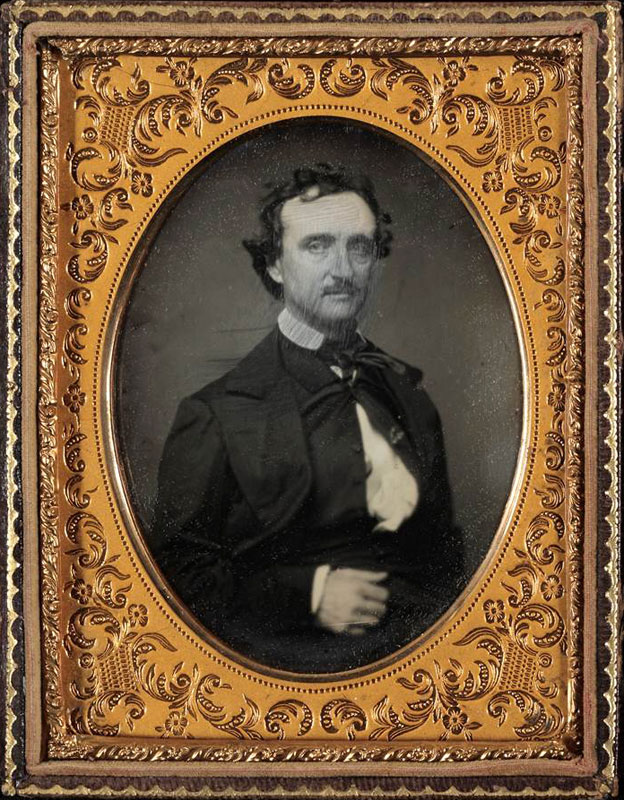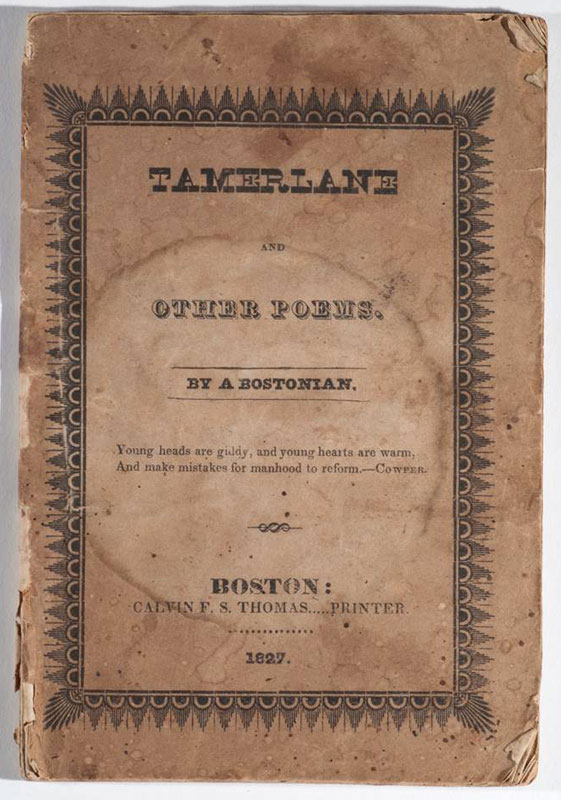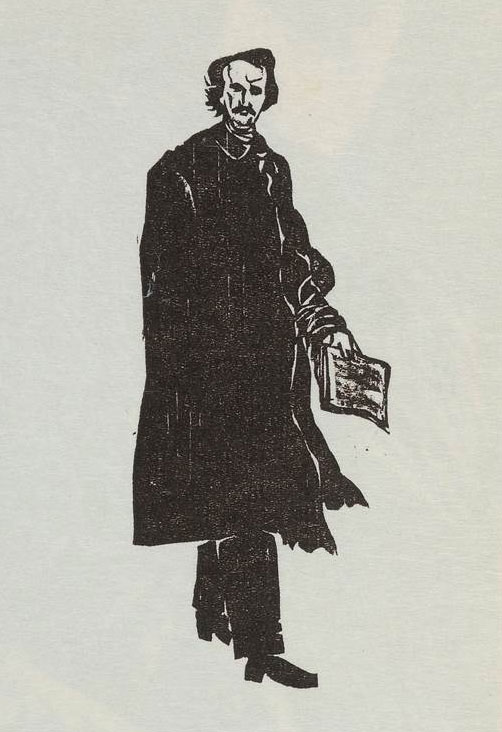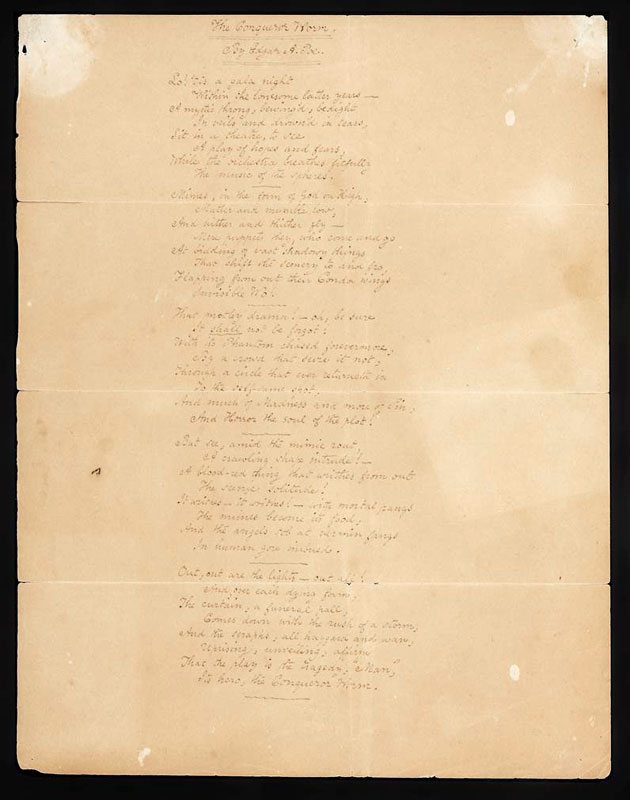The Persistence of Poe
Book collector Susan Jaffe Tane on her unrivaled collection of Edgar Allan Poe and her new exhibit at New York’s Grolier Club By A. N. Devers A. N. Devers has written about Poe for Salon and TheNewYorker.com, and her Tin House essay about the houses of Edgar Allan Poe, “On the Outskirts,” received Notable Distinction in The Best American Essays 2011. She is the founder and editor of Writers’ Houses, an online publication that provides a searchable index of writers’ houses around the world.
Even though 2009 was Edgar Allan Poe’s much-feted bicentennial year, it is 2014 that is turning out to be the gothic American author’s year in the rare book world, having had not one, but two, significant public exhibitions of books, manuscripts, letters, and ephemera mounted in the past twelve months. (He’ll also be honored with a bronze statue to be raised in Boston, the city of his birth, on October 5.)
The first exhibit, at the Morgan Library & Museum, Edgar Allan Poe: Terror of the Soul, ran from October of 2013 to late January 2014, and comprised selections from the Morgan, the New York Public Library’s Berg Collection, and the private collection of Susan Jaffe Tane, who has assembled the finest collection of Poe-related material in private hands. Now Tane is presenting her personal Poe collection in Evermore: The Persistence of Poe at the Grolier Club through November 22, with some exciting additions from other collectors and museums, such as a previously unseen fob and locket with a lock of Edgar’s and his wife Virginia’s hair, from the collection of John Reznikoff, and his silk vest and walking stick on loan from the Poe Museum. The club has also published an accompanying 208-page, illustrated catalogue, written by Tane and co-curator Gabriel Mckee.
Over the years, Tane has earned a reputation as an exceedingly generous collector in the museum and academic community, but she has rarely spoken about her collection to the media. Eschewing the spotlight, she instead paves a way for academics, collectors, and the reading public to find Poe. Among her many contributions to the world of Poe scholarship, she has lent items from her collection to exhibitions, offered financial support to organizations and museums in preparing Poe exhibitions, and provided funding for scholars to attend Poe conferences. She is, in Poe’s eventful afterlife, the exact kind of patron he needed and sought desperately, but never quite found, in his short, tragedy-filled life.
When contemplating Tane’s crucial place in Poe’s sweet hereafter, it’s hard not to engage in some imaginary time travel and envision what Poe would have become if you could transport Tane back in time to right before his death, when he was sobering up, re-engaged to a childhood sweetheart, and finally gaining some traction for the launch of his own magazine, The Stylus. With her resources and knowledge of Poe’s work, Tane could have altered his destiny. But then you realize, that, in a way, she has already done that with her careful stewardship of Poe’s legacy through the assemblage and sharing of her collection.
She kindly, and shyly, agreed to an interview after being put on the spot at the exhibit opening on September 17 (only after noting that the exhibit’s publicist was on vacation). She answered these questions via email, and her replies not only highlight the stand-out items and scope of the Grolier’s Club exhibition, but also demonstrate her personal love and dedication to Poe, the author she calls, “the most important and best-loved American author of the nineteenth century.”
FB&C: What has most surprised you about Edgar Allan Poe and how has your collection helped to shape your own understanding of him?
Tane: A lot of nineteenth-century authors have been forgotten, or at least have fallen largely out of favor. One rarely hears the names of once-bestselling authors mentioned. But Poe is different: he has not only maintained his importance; his popularity has steadily grown over the past 150 years. I don’t think it’s an exaggeration to say he’s the most important and best-loved American author of the nineteenth century. I knew a little about Poe when I began collecting, but for me, my twenty-five years of collecting have been an ongoing learning process. Not a week goes by that I don’t learn something new about Poe, his world, and his work.













